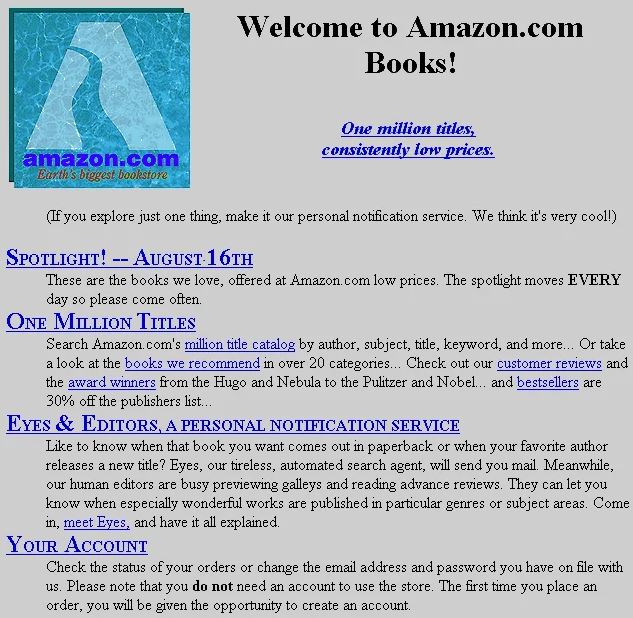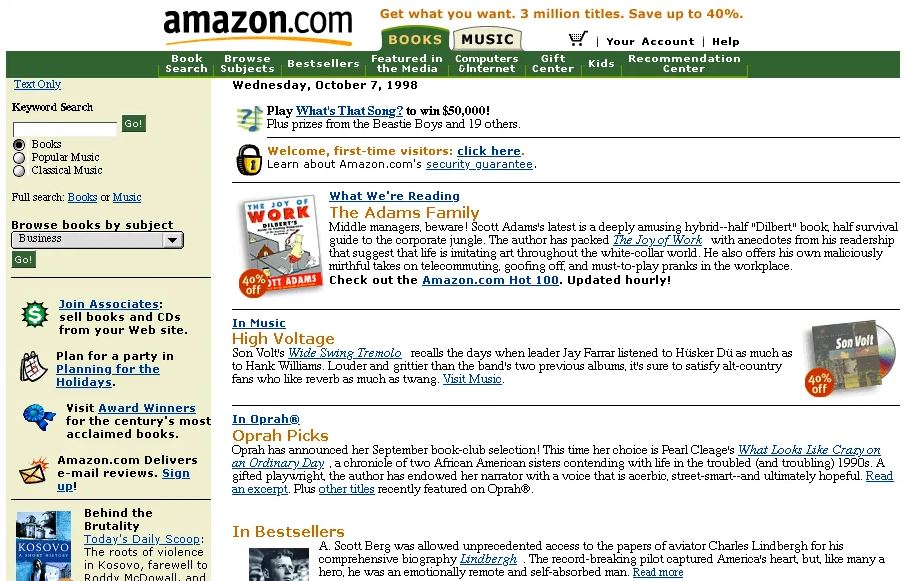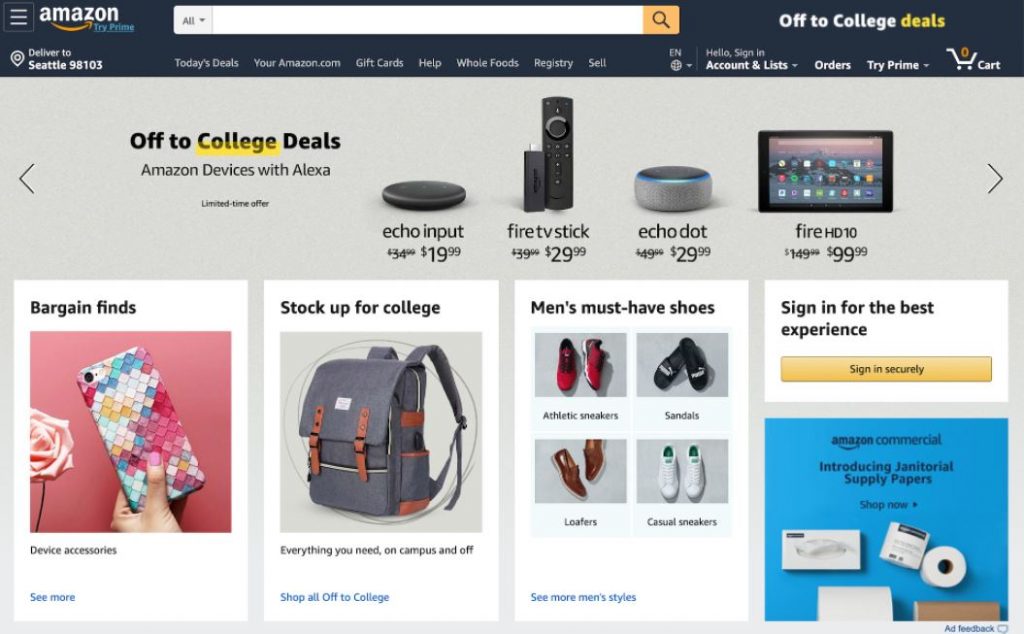Menu
How Amazon.com designed, launched, iterated and scaled their MVP

By James Virgo
18th April 2025
Founder of Amazon.com, Jeff Bezos, saw that ecommerce web usage was growing at a rate of 2300%. From this, Jeff imagined building a massive online store that would sell absolutely anything in the world. He saw this as important because, clearly more people were moving towards online shopping and a store that sold everything in the world couldn’t exist any other way than online.
The Amazon.com MVP
Even though Jeff’s vision was to build an online shop that sold everything in the world, Jeff is a very smart guy who knew that it would be impossible to get every product in the world being bought and sold on day one on his website. There were not realistically enough web users at the time to create sufficient demand, there was no supply chain of products for all the categories of product in the world and this was in the 90’s when most people were still unsure if the internet was a safe place to shop.
To try and figure out if people would actually list and buy products online and to understand what the customers requirements are, Bezos and his team limited their scope. They created a shortlist of 20 products that they felt could be effectively marketed and sold on the internet. Next they shorted this list to just five items. They then decided on just one product category to get started. Books. Easy to buy, easy to ship, not a big investment for the consumer and millions of books in the world (too many to put into one shop). The team then set out to build Amazon’s MVP.
The MVP comprised of
- Amazon.com website
- A list of books
- Geoff Bezos filling orders manually
That was it. When a customer ordered the book, Jeff would physically drive to a book shop, buy the book from the distributor and mail it to the client. That was Amazon’s MVP and it started to earn them money and got them customers.

Next, Amazon used their money to iterate on their MVP. They kept improving their product, adding features, allowing distributors to list their own books, making payments more secure, building a trusted rating system, allowing buyer and seller feedback and so on. All of the iterations made to Amazon.com were based on user feedback.
When iterating on your MVP, the most important thing is to listen to your customers. In fact, Jeff Bezos believes so much in listening to the customer that he made the Amazon mission to be “Earth’s most customer centric company”.

How Amazon.com scaled their MVP?
Originally just a listings page, Amazon.com now includes every product you can possibly imagine. Amazon has even launched their own product lines, including movies which they develop in their own studios.
Their feature set is enormous. Quality of the product lines is controlled through a streamlined peer review and a dispute resolution process. Sellers can upload new products seamlessly using AI to recognize, price and categorize products without them having to press a button. Buyers can expect packages to be delivered within hours. Amazon has bought their own storage and redistribution centers, “fulfillment centers”, which are carefully managed so customer orders are delivered fast and at a low cost.
This entire empire was built on the back of a small amount of revenue which was generated by an MVP. Could the message be any clearer, start small, include some manual process if you need and only spend money building more features if you have paying customers asking for these features.

